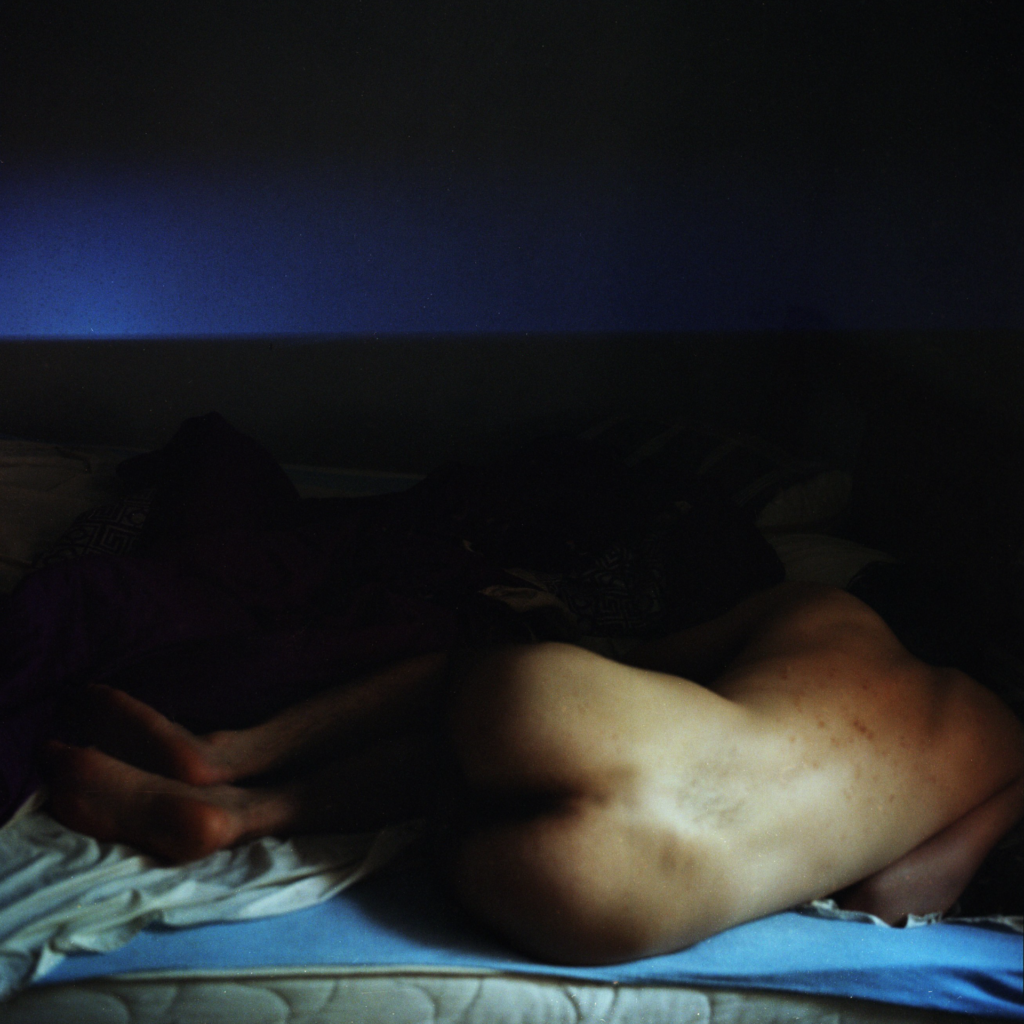As a consequence of the male gaze, women are often represented in portrait photography as creatures that are simultaneously passive and desirable, both exalted and detached from reality. Entirely intimate series of documentary photos are likewise imbued with artists’ desires to see women as objects of erotic fantasy, which suggests an inability on the part of photographers to hide their physical interest in the subjects of their photographs. There are many cases of an artist—a man—photographing his partner—a woman. Vika Eksta’s series of works P. reverses these familiar gender roles, countering the male gaze.
The man visible in the photographs, the artist’s partner, agreed to be photographed asleep, thus excluding any possibility that he could control his bodily movements or pose for the camera. This setting leaves him helpless and vulnerable, while Eksta becomes an observer, documenting her model without him being aware of it.
Despite the differing states of consciousness of the persons involved, these photographs represent a peculiar form of communication. At the time of their making, the man visible in the images, P., worked a night shift on average six days a week and spent his time at home either asleep or drowsy. This work schedule—and hence the process of taking photographs—lasted for one year. The documentation of a fraught, unconventional togetherness also possesses a therapeutic function, since the taking of photographs allowed the author to keep in touch with a person who at the time was unable to participate in direct communication.
The photographs in the exhibition are complemented by entries from Eksta’s diary. These record P.’s daily routine—his work schedule, the time he spent sleeping—and her own reflections on what was happening. P. is a visual study of the influence of working night shifts on the rhythm of a person’s daily life. This study also highlights the question of sleep as an intermediary, facilitating communication between the persons involved but also distancing the model from the photographer. Owing to the distance created by sleep and the difference in their daily rhythms, in the process of documentation Eksta became a voyeur.
This series of works brings to mind not only the separation of gender roles in contemporary photography and the possibilities for communication between people in various states of togetherness, but also the image itself. Specifically, our attention is drawn to the over-saturation of images, which dominates today. Inevitably, a variety of associations arise that in fact have nothing to do with what is shown. The artist, possibly unconsciously, has depicted her sleeping model in such a way that her close framings begin to resemble baroque paintings. The spontaneous positions taken up by the model during sleep appear to be staged, if only because in taking these photographs it seems that Eksta has not only been concerned with documentary directness. The half-naked body draped in bedsheets is entirely relaxed and uncontrolled, but at the same time, P.’s positions resemble those found in stylised compositions in painting. This association arises from thinking specifically about the photographer’s gaze and its unconcealable interest.
Image: Vika Eksta. From series ‘P.’. 2019
Gallery name: Alma Gallery
Address: Tērbatas street 64, Riga
Opening hours: Tue-Fri 12:00 - 18:00
Open: 27.04.2019 - 14.06.2019







